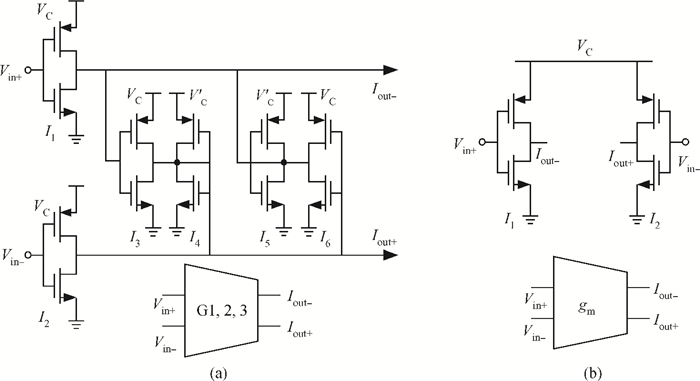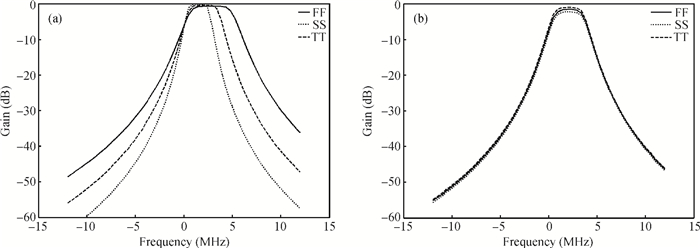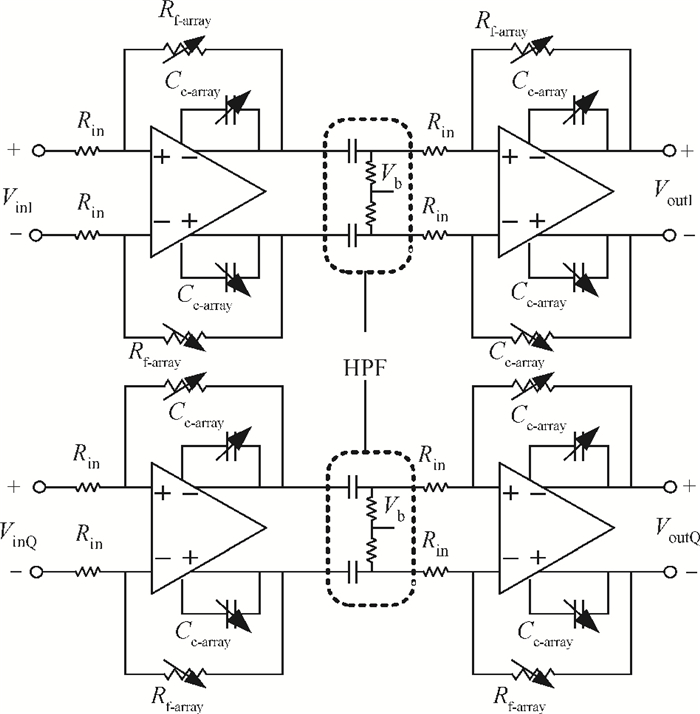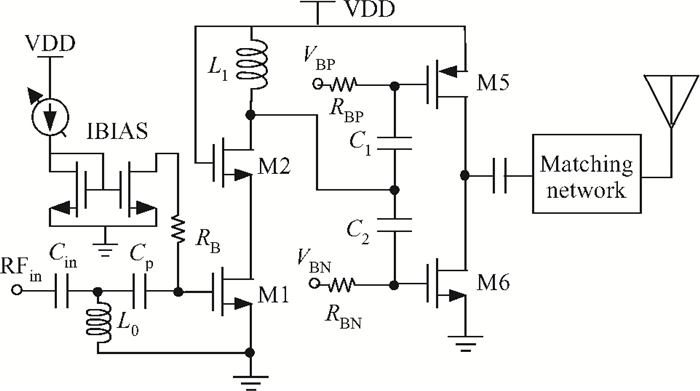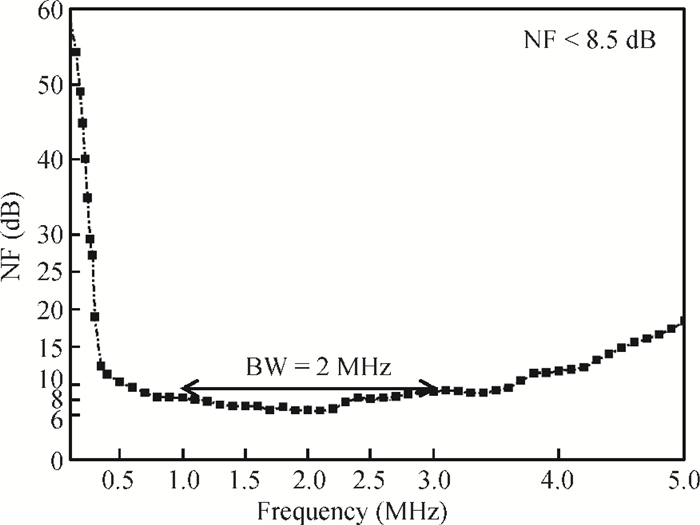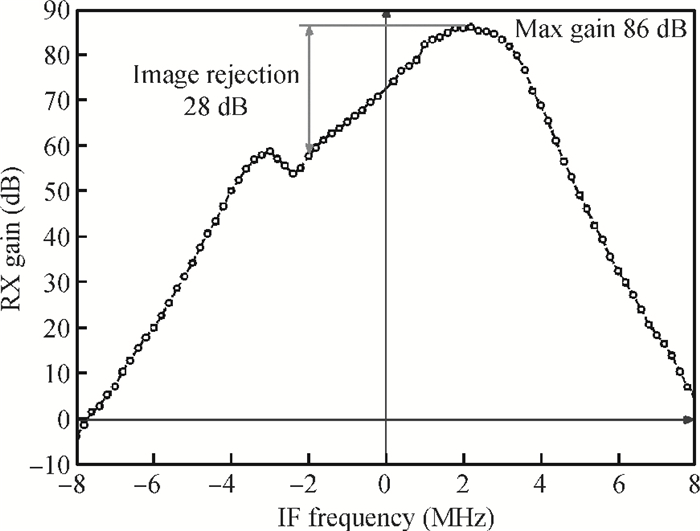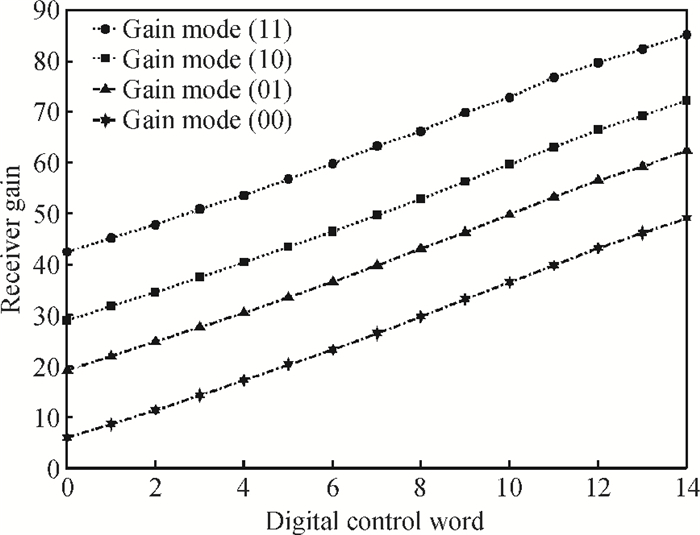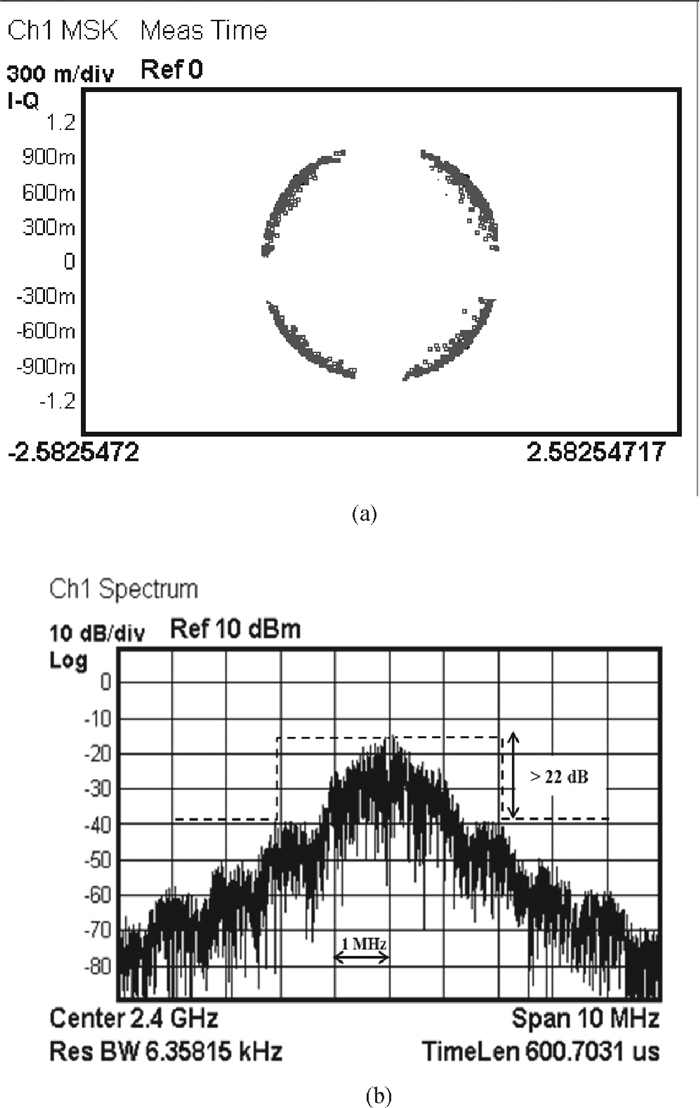| Citation: |
Weiyang Liu, Jingjing Chen, Haiyong Wang, Nanjian Wu. A low power 2.4 GHz transceiver for ZigBee applications[J]. Journal of Semiconductors, 2013, 34(8): 085007. doi: 10.1088/1674-4926/34/8/085007
****
W Y Liu, J J Chen, H Y Wang, N J Wu. A low power 2.4 GHz transceiver for ZigBee applications[J]. J. Semicond., 2013, 34(8): 085007. doi: 10.1088/1674-4926/34/8/085007.
|
A low power 2.4 GHz transceiver for ZigBee applications
DOI: 10.1088/1674-4926/34/8/085007
More Information
-
Abstract
This paper presents a low power 2.4 GHz transceiver for ZigBee applications. This transceiver adopts low power system architecture with a low-IF receiver and a direct-conversion transmitter. The receiver consists of a new low noise amplifier (LNA) with a noise cancellation function, a new inverter-based variable gain complex filter (VGCF) for image rejection, a passive quadrature mixer, and a decibel linear programmable gain amplifier (PGA). The transmitter adopts a quadrature mixer and a class-B mode variable gain power amplifier (PA) to reduce power consumption. This transceiver is implemented in 0.18 μm CMOS technology. The receiver achieves -95 dBm of sensitivity, 28 dBc of image rejection, and -8 dBm of third-order input intercept point (ⅡP3). The transmitter can deliver a maximum of +3 dBm output power with PA efficiency of 30%. The whole chip area is less than 4.32 mm2. It only consumes 12.63 mW in receiving mode and 14.22 mW in transmitting mode, respectively. -
References
[1] IEEE Std 802. 15. 4-2003, IEEE Standard Part 15. 4: Wireless Medium access Control (MAC) and Physical Layer (PHY) specification for Wireless Personal Area Networks (WPANs)[2] Nguyen T K, Krizhanovskii V, Lee J, et al. A low-power RF direct-conversion receiver/transmitter for 2.4-GHz-band IEEE 802.15.4 standard in 0.18-μm CMOS technology. IEEE Trans Microw Theory Tech, 2006, 54(12):4062 doi: 10.1109/TMTT.2006.885556[3] Eo Y S, Yu H J, Song S S, et al. A fully integrated 2.4 GHz low IF CMOS transceiver for 802.15.4 ZigBee applications. IEEE ASSCC Dig Tech Papers, 2007:164 http://ieeexplore.ieee.org/document/4425756/[4] Retz1 G, Shanan H, Mulvaney K, et al. A highly integrated low-power 2.4 GHz transceiver using a direct-conversion diversity receiver in 0.18μm CMOS for IEEE 802.15.4 WPAN. IEEE ISSCC Dig Tech Papers, 2009:414[5] Tedeschi M, Liscidini A, Castello R. Low-power quadrature receivers for ZigBee (IEEE 802.15.4) applications. IEEE J Solid-State Circuits, 2010, 45:1710 doi: 10.1109/JSSC.2010.2053861[6] Raja M K, Chen X, Yan D L, et al. A 18 mW Tx, 22 mW Rx transceiver for 2.45 GHz IEEE 802.15.4 WPAN in 0.18-μm CMOS. Proc IEEE Asian Solid-State Circuits Conf Tech Dig, 2010[7] Yu R, Yeo T T. A 5.5 mA 2.4-GHz two-point modulation ZigBee transmitter with modulation gain calibration. Proc IEEE CICC, 2009:121[8] Peng K C, Huang C H, Li C J, et al. High-performance frequency-hopping transmitters using two-point delta-sigma modulation. IEEE Trans Microw Theory Tech, 2004, 52(11):2529 doi: 10.1109/TMTT.2004.837156[9] Kwon Y I, Park S G, Park T J, et al. An ultra low-power CMOS transceiver using various low-power techniques for LR-WPAN applications. IEEE Trans Circuits Syst Ⅰ, 2012, 59(2):324 doi: 10.1109/TCSI.2011.2162463[10] Razavi B. Design considerations for direct conversion receivers. IEEE Trans Circuits Syst Ⅱ:Analog Digit Signal Process, 1997, 44(6):428 doi: 10.1109/82.592569[11] Lou Wenfeng, Feng Peng, Wang Haiyong, et al. A low power fast-settling frequency-presetting PLL frequency synthesizer. Journal of Semiconductors, 2012, 33(4):045004 doi: 10.1088/1674-4926/33/4/045004[12] Feng P, Li Y, Wu N J. An ultra low power non-volatile memory in standard CMOS process for passive RFID tags. IEEE Custom Integrated Circuit Conference, 2009:713 http://ieeexplore.ieee.org/document/5280734/[13] Bruccoleri F, Klumperink E A M, Nauta B. Wide-band CMOS low-noise amplifier exploiting thermal noise canceling. IEEE J Solid-State Circuits, 2004, 39:275 doi: 10.1109/JSSC.2003.821786[14] Belostotski L, Haslett J W. Noise figure optimization of induc-tively degenerated CMOS LNAs with integrated gate inductors. IEEE Trans Circuits Syst, 2006, 53(3):1409[15] Guthrie B, Hughes J, Sayers T, et al. A CMOS gyrator low-IF filter for a dual-mode Bluetooth/ZigBee transceiver. IEEE J Solid-State Circuits, 2005, 40(9):1872 doi: 10.1109/JSSC.2005.848146[16] Nauta B. A CMOS transconductance-C filter technique for very high frequencies. IEEE J Solid-State Circuits, 1992, 27:142 doi: 10.1109/4.127337[17] Sowlati T, Leenaerts D M W. A 2.4-GHz 0.18-μm CMOS self-biased cascode power amplifier. IEEE Journal of Solid-State Circuits, 2003, 38(8):1318 doi: 10.1109/JSSC.2003.814417[18] Balankutty A, Yu S A, Feng Y, et al. A 0.6-V zero-IF/low-IF receiver with integrated fractional-N synthesizer for 2.4-GHz ISM-band applications. IEEE J Solid-State Circuits, 2010, 45(3):538 doi: 10.1109/JSSC.2009.2039827 -
Proportional views





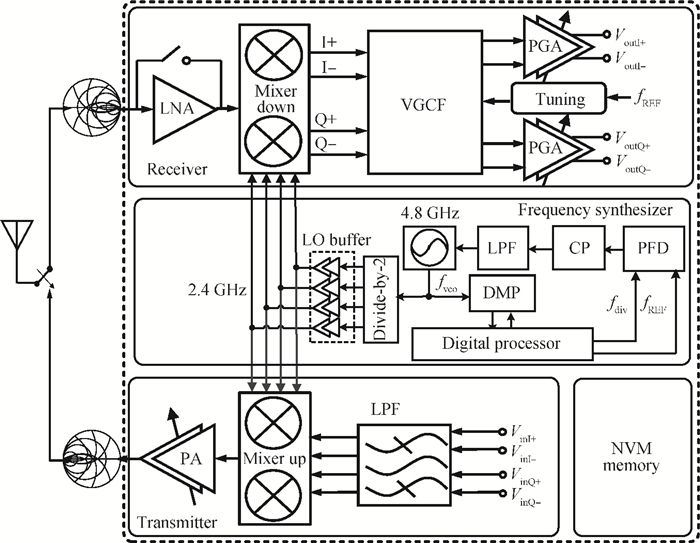
 DownLoad:
DownLoad:




